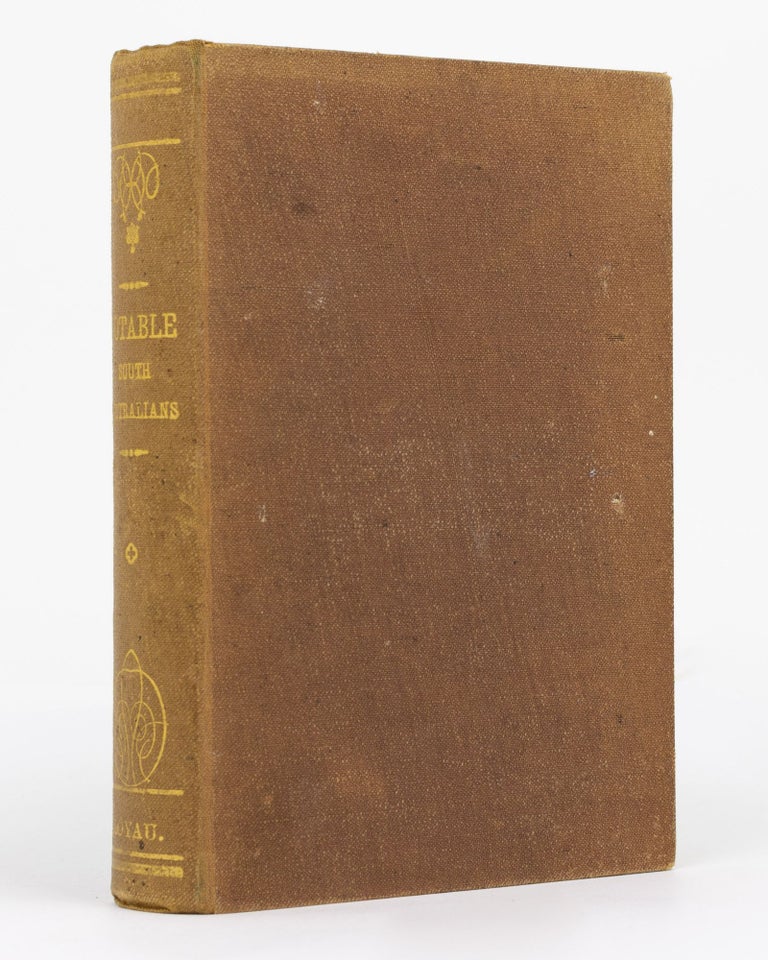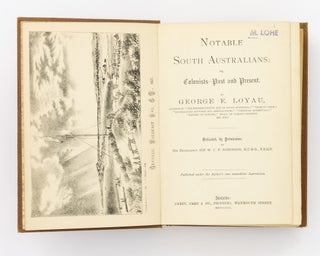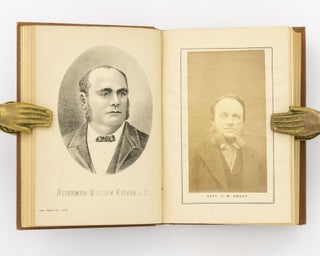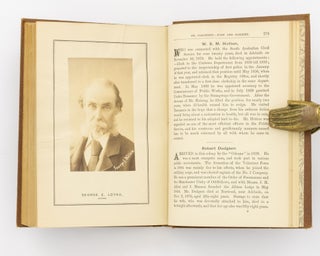Notable South Australians; or, Colonists - Past and Present
Adelaide, Carey, Page & Co., Printers ('Published under the Author's own immediate Supervision'), 1885.
Octavo, viii, 288, [24] (local advertisements) pages plus 17 lithographs (a frontispiece view after J.M. Skipper, 15 individual portrait illustrations, and one plate containing three portraits) and 2 mounted albumen paper portrait photographs.
Mid-brown stippled cloth lettered and decorated in gilt on the spine; cloth a little marked and lightly worn at the corner tips; spine sunned; inner hinges cracked but firm; endpapers offset, with the leading half of the rear flyleaf neatly excised; name-stamp or signature on four early pages (with an old price in ink on the flyleaf and initial blank); a very good copy (internally excellent).
The photographs are of Captain Samuel White Sweet (130 × 71 mm, presumably a self-portrait), and George Loyau (98 × 58 mm, credited in the negative to George & Walton: he is facing the camera, with his head turned a little to the left). This is another variant (see Holden 71) of an item usually found with the author's photograph only (and to further complicate matters, the latter occurs in at least three variant forms as well!). In our experience, this issue with the portrait of Samuel Sweet is most uncommon. Captain Samuel White Sweet (1825-1886, sea captain, surveyor and photographer) took command in January 1869 'of the two-masted schooner "Gulnare", which was later bought by the South Australian government for the Northern Territory survey expedition'. Between February 1869 and April 1872, he made five trips to the Northern Territory. 'In September [1870] in Darwin he photographed the official party at the ceremonial planting of the first pole of the overland telegraph; he also took pictures of the township, the men at work and forest scenery.' He spent the next three years as a master mariner based in Adelaide until 11 May 1875, when 'his ship the "Wallaroo", with his wife aboard, ran aground in a gale on Office Beach, Wallaroo. An inquiry attributed it to Sweet's error of judgment, and he was censured. He retired from the sea, opened a photographic studio in Adelaide and concentrated on landscapes. With his horse-drawn dark room he travelled through South Australia taking hundreds of skilful pictures of the outback, stations and homesteads. The colony's foremost documentary photographer of the 1870s, in the early 1880s he was one of the first to use the new dry-plate process' ('Australian Dictionary of Biography').
Item #129679
Price (AUD):
$400.00




